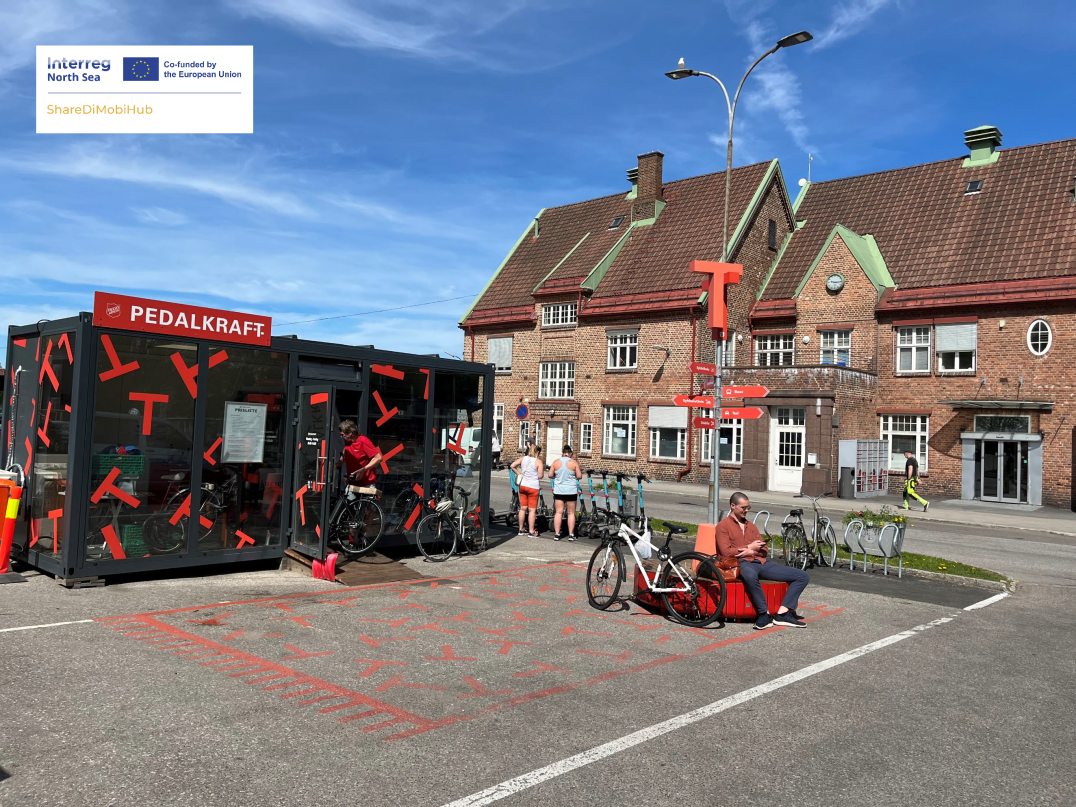ShareDiMobiHub has been recognised by the EU Urban Mobility Observatory as a leading example of how shared mobility hubs can support more inclusive, connected and sustainable transport systems.
ShareDiMobiHub has been highlighted by the European Commission’s EU Urban Mobility Observatory as a key case study in advancing shared mobility hubs across Europe. The feature reflects the project’s strategic contribution to building more connected, inclusive, and sustainable mobility systems.
The EU Urban Mobility Observatory, created 25 years ago by the European Commission's Directorate General for Mobility and Transport, is the EU’s main platform for exchanging knowledge, data, and best practices in the field of sustainable urban mobility. It serves professionals across transport, urban development, health, energy and environmental policy—and offers extensive resources including case studies, policy guidance, and updates on Sustainable Urban Mobility Plans (SUMPs).
The ShareDiMobiHub case study draws attention to the project’s work in:
- Integrating shared mobility hubs with public transport, both physically and digitally, through platforms such as MaaS and interoperability standards like the TOMP-API
- Tackling transport poverty with targeted interventions, inclusive design strategies and the Hub Inclusivity Tool and our reccommenadations.
- Developing transferable tools such as the GIS-based hub planning, and open governance models
- Promoting regional coordination, as demonstrated in pilots across Amsterdam, Leuven, Rotterdam, Utrecht, Tønsberg and the Capital Region of Denmark.

Shared Mobility hub in Tonsberg. Credit: Emilie Bue Lassen
Insights from the pilots
The EU Urban Mobility Observatory spotlighted how ShareDiMobiHub’s pilot have tested diverse strategies to embed shared mobility hubs into broader urban and regional transport systems.
- In Leuven, rotating test hubs were used to reach disadvantaged communities and explore how shared mobility can help address transport poverty. The city directly engaged with residents to better understand their needs and lower barriers to adoption.
- In Rotterdam, efforts focused on neighbourhoods with high car ownership and low familiarity with shared mobility. Strategies were designed to make hubs more appealing and accessible to new user groups, especially in underrepresented areas.
- In Tønsberg, shared e-bikes, cars, and demand-responsive services were integrated at key transit nodes to reduce car dependency and strengthen first- and last-mile connectivity.
- In Amsterdam, hubs are being expanded with a strong spatial and policy focus—targeting areas with limited public space or practical alternatives to car ownership. The regional authority is coordinating 20 new hubs to align with long-term transport goals across municipalities.
- The Province of Utrecht is advancing the digitalisation of hubs by collecting and analysing usage data to guide strategic expansion. Utrecht also created a GIS-based methodology for hub location planning, and conducted a full inventory of 100 hubs to support regional upscaling.
Across all locations, the EU highlighted how these pilots go beyond deployment—they test inclusive design, behavioural nudging, interoperability standards like TOMP-API, and data-driven monitoring. Together, they form a replicable model for how shared mobility hubs can reduce emissions, improve accessibility, and make multimodal travel more attractive for all.
The Observatory’s feature underscores how mobility hubs are becoming a cornerstone of Europe’s urban mobility strategies—not only for enhancing multimodal access, but also for supporting environmental goals, spatial efficiency, and social inclusion.
